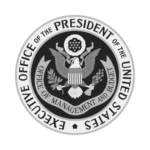
Global Expert on the Future of Work, Reinvention, and Human Potential
Writer ▪ Speaker ▪ Advisor
Alina’s Been Featured On Or Worked With…






The old rules of work are broken.
I help ambitious professionals and organizations build what comes next.
For 20 years, I followed the script: Arthur Andersen, UBS, startup CFO, all the credentials. Eventually, I realized the script no longer matched reality, and the promise of predictable careers had disappeared.
Since then, I’ve dedicated my work to helping people and organizations navigate change, reinvent themselves, and build careers that actually fit in a world where certainty is gone, and AI is rewriting the rules.

As founder of Career Insights Agency and writer of the MonetizeSkills newsletter, I advise executives and teams facing rapid change, workforce transformation, and the collapse of the career guarantee.
My research has been published in the International Journal of Economics and Financial Issues, and I’m a USA Today bestselling co-author of “Luminary Leadership: How Top Entrepreneurs Lead in Business and in Life.”
MonetizeSkills is read by leaders at McKinsey, Amazon, JPMorgan, Deloitte, and the world’s most forward-thinking organizations.
Signature topics:
- The Collapse of the Career Guarantee: What Happens When the Old Promises Disappear
- Navigating Uncertainty: Real Strategies for the New World of Work
- Don’t Be a Commodity: Standing Out in a World of Algorithms
What I’m known for:
- Navigating careers built in chapters, not ladders
- Turning uncertainty and change into your best opportunities
- Finding your edge in a world where AI can do almost anything except be you
- Building your own metrics for success
If you’re ready to rethink work, meaning, and what comes next for yourself, your team, or your organization, you’re in the right place.
To book me for your next event, inquire about advisory, or join the conversation, contact here.
